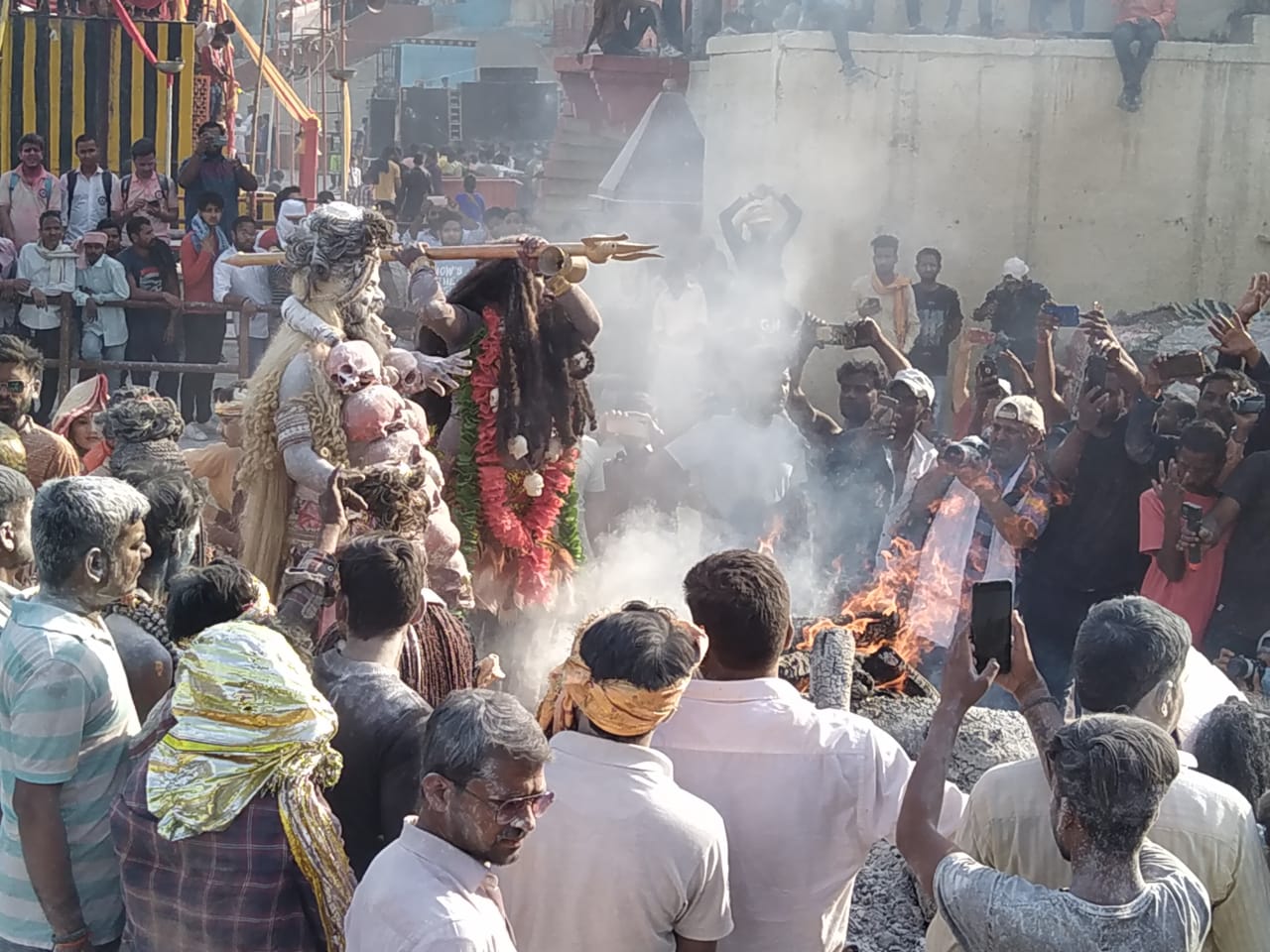Rangbhari Ekadashi: Celebrating reunion of Lord Shiva and Goddess Parvati

The devotees of Lord Shiva, smeared in ashes take part in the possession for about 2 km. (Image Credit; Rahul Singh)
Celebrated five days before the actual Holi in Varanasi, Rangbhari Ekadashi marks the reunion of Lord Shiva and Goddess Parvati.
As mythology has it, Lord Shiva got married to Goddess Parvati on Mahashivratri and the two deities travelled from her maternal house to Varanasi for the first time on this day.
The highlight of the Rangbhari Ekadashi is the procession from Mahant House in Tedhi Neem to the Kashi Vishwanath temple of Varanasi. The possession, which witnesses a turnout of around 3,000-4,000 devotees, marches through the streets of Varanasi carrying idols of Lord Shiva and Goddess Parvati, dancing to the pulsating music of drums.
As the procession moves, the streets also become colourful as women, sing traditional Rangbhari folk songs, and shower petals on the procession. All along the route of procession, various stalls spring up, serving local delicacies like malaiyo, flavoured milk, and bhang, made from cannabis leaves, are also arranged for devotees.
Rangbhari Ekadashi also known as Masaan ki Holi is celebrated at Harishchandra Ghat, where the celebration begins a day earlier. On this day, the devotees of Lord Shiva, smeared in ashes take part in the possession for about 2 km route from Kinnaram Baba to Harishchandra Ghat, where burning of pyres never stops.
Traditionally, however, Masan ki Holi has been celebrated around the burning pyre at the main cremation ground of Manikarnika Ghat, a day after Rangbhari Ekadashi.
According to mythology, it is celebrated a day later because when Shiva reached Varanasi, he celebrated Holi with all the locals but could not celebrate with his ganas (attendants of lord Shiva) and hence even today, Shiva himself comes to play Holi with his ganas on the Rangbhari day.
At Manikarnika ghat, the celebration starts with a grand aarti at Masaan temple. Devotees mainly dominated by bare-bodied naga sadhus and aghoris smear the Shivling with ashes collected from the ghats of a burning pyre, amidst the chorus of small drums beating in the background.
“This day is celebrated with great pomp and show. A procession with a silver statue of Lord Shiva and Parvati is carried out in the streets of Varanasi. The procession passes through the streets leading up to Lord Vishwanath temple by spraying dry colour powder on the bystanders and singing Holi songs along with the chorus of bells and drums. Since Lord Shiva is also a resident of a cemetery, all the aghori sadhus celebrate Rangbhari Holi with ashes of a pyre,” says Rahul Singh, a procession participant.









